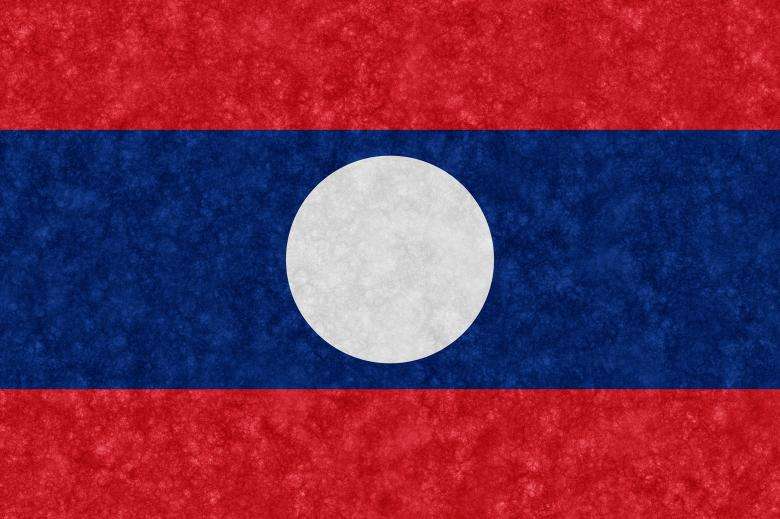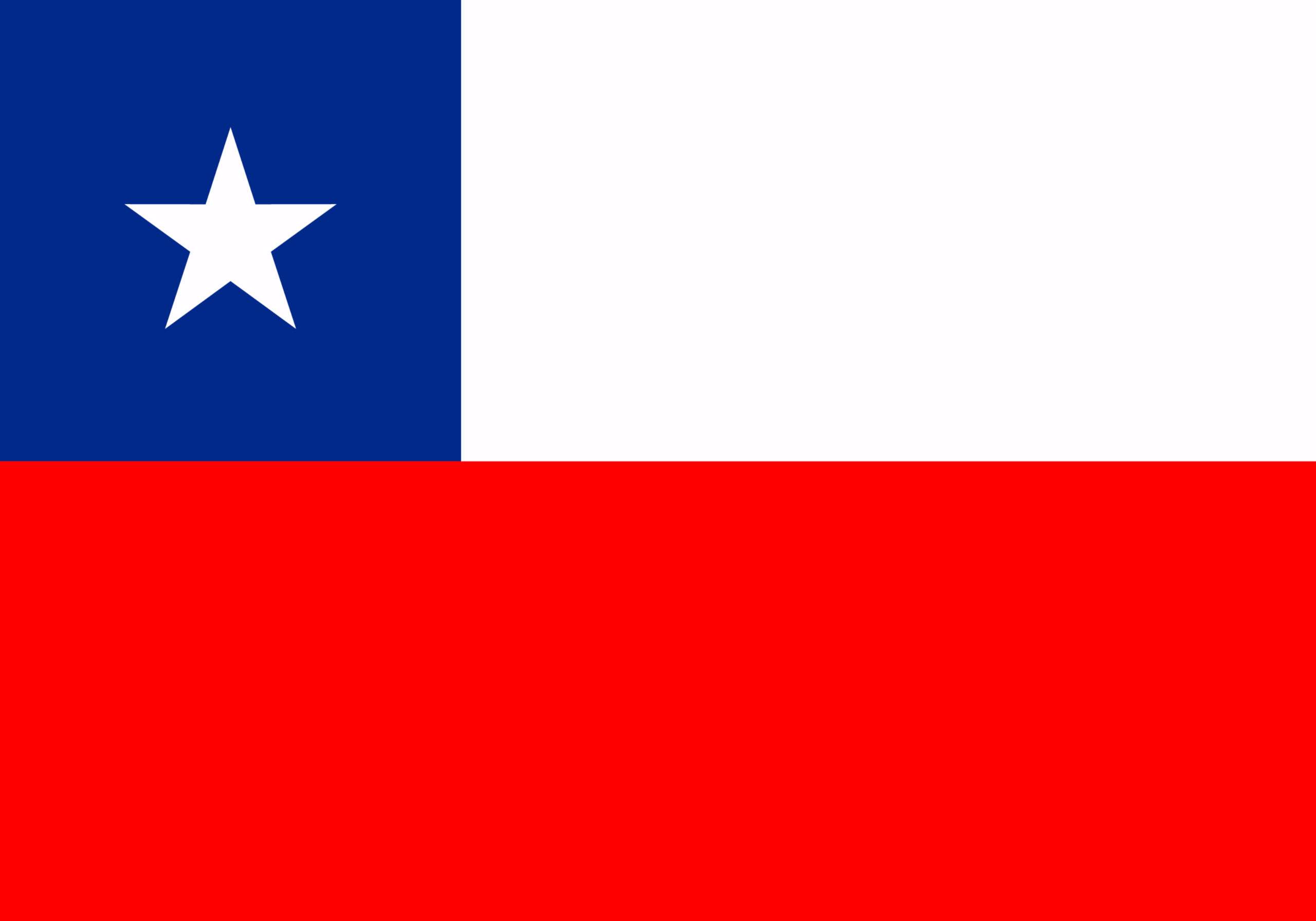Red for the blood shed in the struggle for freedom, blue for the Mekong river and the prosperity of the country, and a white sphere as a full moon representing unity under communist rule. That’s how Laos’ national flag conveys the story of the country.
Laos is a landlocked country, located in the Northeast central mainland of Southeast Asia. Officially it is called the “Lao People’s Democratic Republic”. It is situated in the heart of the Indochinese peninsula, bordered by Myanmar and China to the northwest, Vietnam to the east, Cambodia to the southeast, and Thailand to the west and southwest. It is represented by a three-striped flag with a middle blue stripe and red top and bottom strips. In the centre of the middle blue stripe is a white disc. This flag was first adopted in 1945 by the then-ruling Lao Issara government. It was readopted as the national flag in December 1975 as Laos became a socialist state.
Let us take a look at the history of Laos and its national flag to understand what it symbolises and the significance it holds.
A glimpse into the history of Laos through the transformation of its national flag
Laos’s first officially adopted flag was the blue-white-re vertical French tricolour, as it was a protectorate under French rule. Later, a specific design was adopted featuring a plain red with gold outlined triple-headed white elephant with black headgear on a podium with a candle emitting rays above. Then in 1893, the gold border of the central image and shining light was removed and the elephant was also altered to show both tusks and the black headdress was removed as well.
The current national flag of Laos was first designed in 1945 by a member of the Lao Issara government, Maha Sila Viravong. He was a famous Lao nationalist and scholar of traditional Lao literature, history, and culture. This flag was to replace the older royalist red flag displaying a triple-headed white elephant on a pedestal beneath a parasol.
The said red flag which was representing Laos at that time originally belonged to the 19th-century kingdom of Luang Prabang. This royalist flag symbolised the ancient name of the country which meant– “the land of a million elephants”. This flag continued to be in use even after this kingdom became a French protectorate, and its status remained the same after the “kingdom of Laos” was formed by unifying the different provinces of Laos into one kingdom.
The current national flag was designed to be distinct from the royalist flag of the kingdom of Luang Prabang. After the establishment of the Lao Issara government, it was adopted as the national flag on 12th October 1945. It continued to be in use until the French takeover of the country in 1946. But the flag was still used by Lao Issara which continued as a political movement in exile. Lao Issara continued using the flag till its dissolution in 1949.
Later, Pathet Lao, the communist-led successor of Lao Issara reused this flag to represent the movement and continued doing so till the fall of the royal government in 1975. However, during the period from 1952 to 1975, the country was officially represented by another flag. It was again a red-coloured flag. The flag had a white tree-headed elephant in the middle, which is said to represent the Hindu god Erawan. The elephant stood on a five-level pedestal, and over its head was a nine-folded umbrella. In Southeast Asia, a white elephant is seen as a symbol of royalty. Similarly, the nine-folded umbrella is also a royal symbol originating from Buddhist cosmology. And the pedestal was used to represent the laws on which the country rested. This remained the national flag of “The Kingdom of Laos” until the fall of the royal government which was in 1975. After this, the Viravong’s flag was re-adopted as the national flag of the “Democratic Republic of Laos”.
The national flag of Laos has been a concrete witness of its journey throughout history through various rules, rulers and political movements. It has been adopted and re-adopted by the people and leaders of Laos. At different points of time in history since it was first designed and adopted, it has disappeared from the foreground several times, but it has always remained in the background witnessing the changes Laos went through. And it re-emerged as the official national flag in 1975 as the Kingdom of Laos finally transformed into the “Democratic Republic of Laos”.
The design of the national flag of Laos and the meaning behind it
The current national flag of Laos was first designed in 1945 by the Lao Issara government to replace the then-royalist flag which belonged to the kingdom of Luang Prabang. Since then, there have been many changes in the rules and rulers of Laos and it has gone through major political transformations. However, the flag designed by Viravong has been sustained without going through any change in its design. What does this design signify that it remained relevant throughout all these years of political changes?
The design of the national flag of Laos
The national flag of Laos consists of three horizontal stripes, the top and bottom stripes are red in colour while the middle stripe is blue. The middle blue stripe is twice the height of the top and bottom red stripes. In the centre of the blue stripe, there is a white disc whose diameter is four-fifths (⅘) of the height of the blue band. The proportion of the flag is 2:3.
The symbolic meaning of the design of the flag
Each colour of the Laos flag symbolises a significant feature of the country or its glorious history. According to the original creator of this flag, Maha Sila Viravong, the blue symbolises the Mekong river, which is seen as a symbol of Laos’ prosperity. Whereas, the white disc in the centre of the blue stripe represents a full moon against the Mekong river. It is seen as a symbol of the unity of the Lao people under one nation. It also signifies Laos’ ambition as a nation to reunify two Laotian regions of Laos and Northeastern Thailand that are divided by the Mekong River. The two red stripes stand for the blood shed by the Lao people on both banks of the Mekong river in their struggle for freedom from the French.
Get to know Laos
Laos is a landlocked country in Southeast Asia located at the heart of the Indochinese Peninsula. It is surrounded by Myanmar and China on the Northwest, Vietnam on the east, Thailand on the west and southwest and Cambodia on the southeast. Its capital city is Vientiane which is located along the Mekong river in the northern portion of the country. Laos is a socialist state with a politically and culturally dominating population of Lao people who constitute 53.2% of Laos’ population. The geography of Laos is very diverse having forested mountains, plateaus, and lowland plains. The majority of the population in Laos is involved in agriculture. Most of the population in Laos practices Buddhism, however, the culture of this country has been shaped by both Hindu and Buddhist lore whose imprint can be seen in local art and literature.
Laos has the typical tropical monsoon climate. It is famous for its beautiful Kuang Si waterfalls that attract tourists to this country. Despite its small size, Laos offers tourists many interesting experiences and adventures through its diverse and beautiful diverse geography that ranges from mountains to river islands. It also offers many adventurous activities like kayaking, cycling and zip-lining which are popular among tourists visiting this country.
Some interesting facts about Laos
- Laos is the only landlocked country in Southeast Asia having no coastline as all its borders are surrounded by other countries, namely–Myanmar, China, Cambodia, Vietnam and Thailand.
- The creation of a new flag which is currently the national flag of the Democratic Republic of Laos was inspired by Thailand’s adaptation of a white-red-blue tricolour as the national flag over the traditional royalist flag.
- Laos is one of the world’s last 5 remaining ‘communist’ countries alongside North Korea, China, Vietnam and Cuba.
- Owing to its communist rule, Laos has an official nationwide midnight curfew.
- The population density of Laos is the lowest in Southeast Asia, at the same time, it is also one of the most youthful populations.
- Laos ranks second in the list of shortest countries in the world.
- It is known for its gigantic papayas which have their origin in Mexico but grow extremely well in the climate of Laos.
- It also has the tallest treehouses in the world, which are located in the Nam Kan National Park of Laos.
By: Bhumika Katyayan



